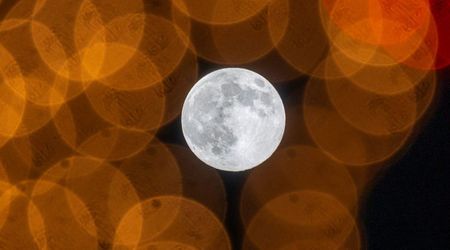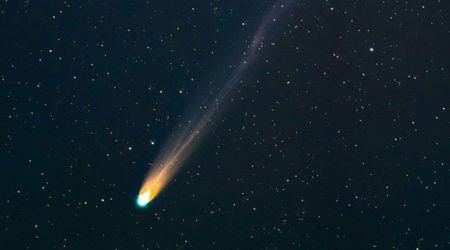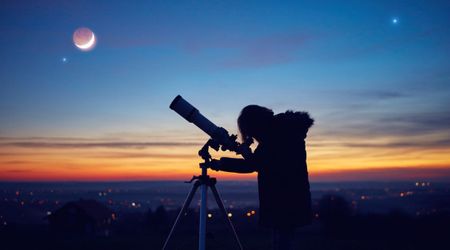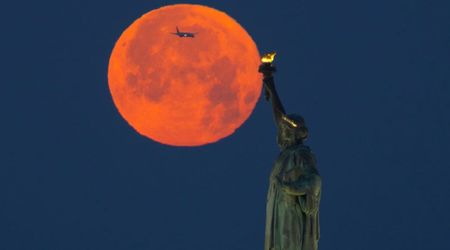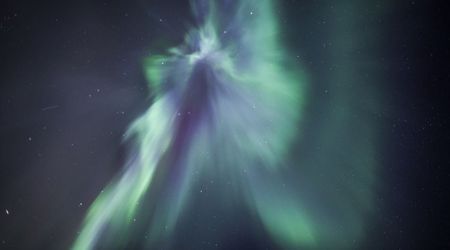July's night sky offers incredible glimpse of the Eagle Nebula (M16) above Sagittarius Teapot’s spout

The majestic Eagle Nebula (M16) ascends to its prime viewing position tonight, offering a spectacular celestial show. This renowned star-forming region, officially designated Messier 16, will be visible high in the southern sky, approximately 35 degrees above the horizon around 11:00 p.m. local time on July 25, according to Astronomy.com.

Located within the constellation Serpens Cauda, the Eagle Nebula is a captivating blend of an open star cluster (NGC 661) and an emission nebula (IC 4703). Its prominent placement directly above the "spout" of the Sagittarius Teapot asterism makes it a distinctive target for observers. For Precise targeting, astronomers can locate M16 roughly 10 degrees east-northeast of Xi (ξ) Serpentis or 2.6 degrees west-northwest of 4.7 Gamma (γ) Scuti.

Spanning a considerable 7 arcminutes and shining at magnitude 5.7, the nebula presents a wealth of detail even to modest equipment. A small telescope will reveal numerous stars embedded within the glowing gaseous clouds. At the heart of this cosmic nursery lie dark, dense structures of cold gas, the birthplace of new stars. These formations include the iconic Pillars of Creation, famously captured in intricate detail by the Hubble Space Telescope. Aspiring observers hoping to glimpse these stellar incubators are advised to use a telescope with an aperture of at least 5 inches, ideally from a dark-sky location. Utilizing OIII or UHC filters can further enhance visibility.
The Eagle Nebula provides a vivid illustration of the universe's remarkable stellar recycling process. Here, gravity orchestrates the birth of new stars from the very gas and dust expelled by previous generations. Massive young stars within the nebula play a crucial role; their powerful winds sculpting the surrounding material, clearing some areas while compressing others, thus influencing the formation of lower-mass stars. While forming stars remain veiled within their dusty cocoons, invisible to the naked eye, their emitted infrared light can penetrate these clouds, offering astronomers a unique glimpse into their development via infrared telescopes, as per View Space.

While the Pillars extend approximately 4-5 light-years, the entire nebula stretches an impressive 70 by 55 light-years. Discovered in 1745 by Swiss astronomer Jean-Philippe Loys de Chéseaux, this nebula resides 7,000 light-years from Earth, according to NASA. The star cluster embedded within the Eagle Nebula, with an apparent magnitude of 6, is discernible through a small telescope. However, resolving the intricate details of the Pillars of Creation themselves necessitates a larger telescope and excellent viewing conditions.
As July's night sky continues to offer spectacular views, another notable object for observers is the Hercules Globular Cluster, also known as M13. This exceptionally bright and iconic globular star cluster is located approximately 23,000 light-years away in the constellation Hercules. With an apparent magnitude of 5.8 and an apparent size of 20 arcminutes (roughly 0.7 times the size of the Moon), M13 stands out as a celestial beacon. Primarily observable from the Northern Hemisphere, it's generally not visible to the naked eye under most conditions, as per Star Walk.

However, M13 appears as a fuzzy ball of light through binoculars, revealing a densely packed core in a small telescope, while medium to large telescopes begin to resolve its stars, offering a breathtaking view. M13 has long been a favorite for stargazers and even gained prominence as the target of the 1974 Arecibo Message, a symbolic radio transmission from Earth intended for potential extraterrestrial civilizations.
